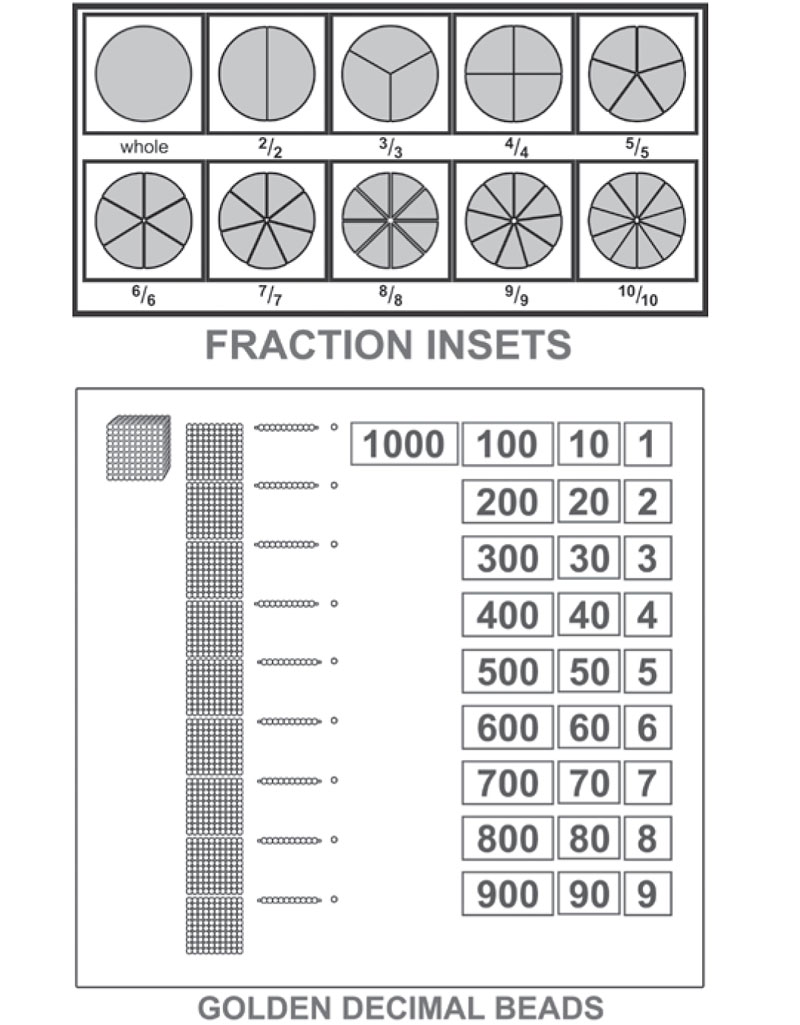Montessori revolution in math
Anyone can be “MATH Smart.” Of all the school subjects, Math is the most dreaded since the concepts are very abstract. Children, however, can easily fall in love not only with Math but also with Geometry even at the early age of three to six when the child’s interest in learning with hands-on materials is most intense.
Fortunately, it is from preschool to primary school where parents are most enthusiastic and concerned with their children’s learning. When children reach the intermediate level of Grades IV to VII, parents’ interest in coaching or tutoring their children starts to diminish. Watch out, for this is the start of the delicate period called Puberty. The intelligence begins to wane as evidenced by their self-consciousness and inhibitions, closing up of their personality. The growth hormones are especially active, particularly for the girls. It is a vital passage to adulthood which must not be ignored.
3 sets of materials to prevent Math phobia
Dr. Montessori, more a scientist than a teacher, discovered that abstract or purely intellectual lessons, especially that of Math, needed solid material on which hands, eyes and imagination can work with. A Math computer program is purely visual and flat. It cannot take the place of rods, cylinders, beads which the child can lay down with precision. She put together sets of materials for numeration before computation.
GROUP I - Usually loose pebbles, buttons or bottle caps are used for counting 2, 3, 4 or 5 but to a child each item is seen as only 1. To see each number as a unit Montessori provided the Number Rods, each piece a whole unit. Example: rod #10, the longest, is 1 meter divided into 10 decimeter red and blue sections. The “zero” concept is injected in the Spindle Boxes (0-9) where the zero section does not receive any spindle while sections 2, 3, 4 up to 9 receive bundles of spindles put together by a rubber band.
GROUP II: DECIMAL GOLDEN BEADS AND CARDS. Dr. Montessori stressed that a concept should be placed within a large framework. In numeration, she chose to present the Decimal System of whole numbers with the Golden Decimal Beads of loose unit beads, ten bead bars, 100 square beads and the cube of a thousand. The introduction to the Montessori Decimal numeration is shown above. The complete set of beads and cards as illustrated show units 1-9, the tens 10- 90, 100- 900 and 1000 is used to form complex numbers. After mastery two children can do simple or dynamic arithmetic operations.

GROUP III: PARALLEL EXERCISES WITH TEEN NUMBERS, SKIP COUNTING. The Montessori system provides parallel materials and lessons to reinforce numeration concepts. Bead bars are color-coded: red (1), green (2), pink (3), blue (4) etc. and chained like rosary beads. Example: 102 is shown as the Chain of 100, ten golden bead bars when laid out on the floor, the child places small arrow strips of 10, 20, 30, beside each bead bar. Chain of 1000 is longer.
Fractions
A fraction is less than 1. Understanding this is difficult so the Montessori Fraction wooden material is designed as 10 red insets laid out on a board (see illustration). The first inset is a whole circle, the next is a circle divided into two halves, the third divided into 3 thirds, the fourth divided into fourths. Montessori teaches the child that each is a “family.” so the circle of ¼ has four members. Their surname is “fourth.” The lesson on Equivalence follows. Using the fraction of the halves, the child is taught which fraction can fit on ½ - thirds, fourth, fifth, etc. Finally he finds that only 2/4’s, 3/6’s, 4/8’s and 5/10’s can fit.
Geometry
Italians do well in Math and Geometry. Their famous men Galileo and Marconi based their discoveries on this science. Even Michelangelo and Leonardo da Vinci sketched their works of art with Geometry skills.
As early as preschool, Montessori introduces the Geometry Cabinet of six trays showing insets of the basic Geometric shapes of the world: the first tray introduces the square, triangle and circle. The second tray shows the triangle according to angles (right angle, acute, obtuse, etc.), and according to sides (equilateral, isosceles, scalene). The rest of the trays show kinds of quadrilaterals, polygons and irregular shapes.
The mathematical mind
For Dr. Maria Montessori, the objective of the Math and Geometry lesson was the formation of a Mathematical Mind. It does not only refer to the acquisition of numerical and problem solving skills. It is the special mind of a cook, salesman, engineer or nurse inputs personal exactitude and precision into one’s work. People with mathematical minds stabilize the nation.
- Latest


























 Partner
Partner